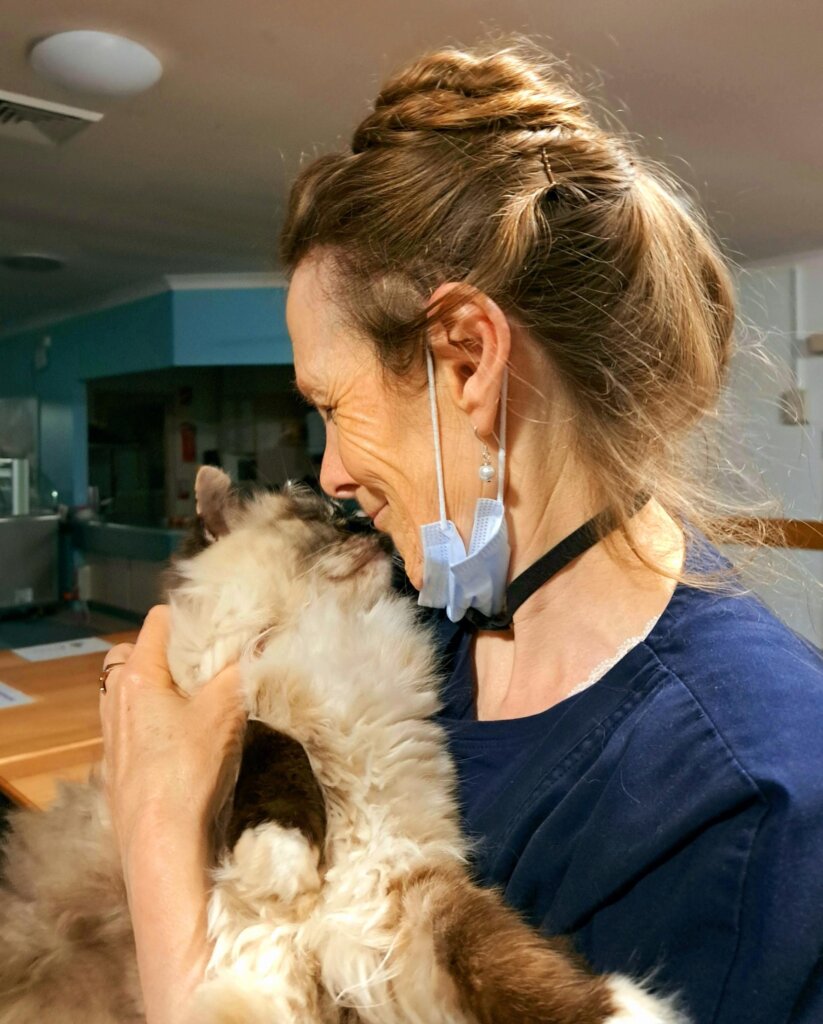The Changing Face of Aged Care
Lauri Buckingham has worked as a registered nurse with the Rural Locum Assistance Program (Rural LAP) almost full-time for over ten years. During this time, Lauri travelled thousands of kilometres around the country, predominantly to rural multipurpose services (MPS).
An MPS is a small country hospital that has evolved into a multipurpose facility with an aged care component. Each facility is unique and varies in size and complexity in the services it provides to the community.
Initially, I did not choose to commit to the aged care field.
However, I soon learned that it is a rapidly expanding phenomenon and that we are all engaged somehow.
There is now a higher percentage of the population that is elderly and vulnerable than ever before and, within that situation, lays a real challenge that, during my travels, I find each site is endeavouring to meet in its own way.
The challenge is how to humanise and uplift the often overwhelming disempowerment of aging and how to create environments that re-empower and instil quality in their lives.
The complexity of needs is diverse for the residents, ranging from those largely independent, mobile hostel dwellers to those needing more assistance, those with dementia, anger management issues, and increasing numbers of immobile bariatric residents with complex health and ever-occurring palliative care needs.
Aged care offers a challenge for health practitioners.
Unlike paediatrics, ED, ICU and other clinical fields that are dynamically charged, aged care demands a different approach and varied set of skills. In fact, I believe it is the challenge of our century.
Aged Care Facilities are a barometer of infused humanity in our institutions and how successful we are as a society in implementing our highest ideals.
Enjoyment of life, self-worth, and a sense of purpose are essential to enhance life at any age, particularly in elder years when society does not naturally imbue these gifts.
Fundamentally attaining these goals, in my observations, is a dense mix of funding, creativity, idealism, community integration and, above all, shoes on the ground.
In supporting and ensuring the quality of life in aged care facilities, the most vital components are adequate and realistic staffing and creating nurturing environments for the residents and aged care workers.
Recruitment and retention is a huge challenge, yet within it lays the answer to providing positive lives for the elderly and the key to attracting and keeping new people in the field.
Low staffing is dangerous in any environment, particularly in dealing with vulnerable, fragile people.
Exacerbated workloads deplete the patience, insight and generosity essential to building and sustaining a nurturing environment.
My locum travels have exposed me to many positive approaches by facilities to deinstitutionalise aged care and integrate it into the community using more effective methods by involving schools, clubs, groups, churches, local musicians, theatre groups, pet therapy and any other creative option available.
In reshaping environments in this way, greater stimulation is provided for the residents, and they become far more enjoyable places to work.
In the middle of the drought three years ago, I witnessed the local school children singing and dancing in the rain for the residents at Trangie MPS.
At Gulargambone MPS, a troupe of Elvis impersonators had the place jumping, so much so that even the resident suffering most from dementia was tapping her toes and joy radiated from her face.
Pre-pandemic at Coolamon MPS, Friday was a night out for the ladies who delighted in dressing up and being brought safely home by the local cabbie.
The most homely environment I have observed was at Dorrigo MPS, with high tea, bingo, jam making, knitting and sewing circles, movie sessions, games and anything the residents can think of.
One resident manages the chickens and sells eggs as a small business.
One ingenious staff member has created a worm farm on the balcony for one of the bed-bound residents, from which it produced bottles of potent liquid worm fertiliser so that, even though the resident has minimal movement, she can enjoy the payment jar filling before her eyes.
And at this establishment resides Rosie the Ragdoll Cat, who had stand-offs with Wallie the Border Collie.
There is always fish, the wild birds are fed on the balcony, and pets are encouraged to be brought in with family.
One of the most delightful germinations in consciousness has been the realisation among many facilities of the vital role of integrating pets.
Throughout their lives, most residents have enjoyed the companionship of different animal species and draw enormous comfort and stimulation from their presence.
I have noted tactile experiences, particularly for dementia residents, cultivated a calming state of mind and drew out a very personalised furry friend interaction.
Aged care is a phenomenon we are all touched by.
Our greatest challenge is developing routines to provide stimulating and happy environments for people in the last years of their lives with practices that attract and retain the most motivated and inspired clinicians.
We must all work together. After all, it is a destiny we are all moving towards in one way or another. More importantly, it is a mark of the implementation of society’s highest achievement, to always strive towards ensuring the quality of life for everyone, no matter what stage of life.

With a shortage of nurses Australia-wide, there are opportunities to join Lauri, and others like her, to make a difference.
Click here to find out more information about joining our team of dedicated aged care locums.




